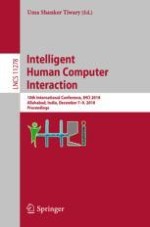2018 | OriginalPaper | Buchkapitel
Bone Conducted Speech Signal Enhancement Using LPC and MFCC
verfasst von : Premjeet Singh, Manoj Kumar Mukul, Rajkishore Prasad
Erschienen in: Intelligent Human Computer Interaction
Aktivieren Sie unsere intelligente Suche, um passende Fachinhalte oder Patente zu finden.
Wählen Sie Textabschnitte aus um mit Künstlicher Intelligenz passenden Patente zu finden. powered by
Markieren Sie Textabschnitte, um KI-gestützt weitere passende Inhalte zu finden. powered by
